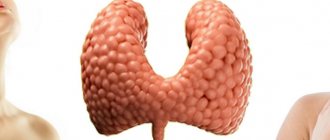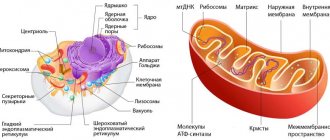Diseases of the gastrointestinal tract usually cause people a lot of problems, but despite this, many delay treatment, trying to cope with the disease on their own. This approach is not only not beneficial, but can provoke dangerous complications and concomitant diseases. So how to check the pancreas? What tests should I take to avoid mistakes? In case of any disturbances in the body, the first thing a person should do is consult a doctor for qualified help. It is the doctor who will prescribe the necessary tests to determine the disease and plan treatment.
What does a tissue biopsy provide?
The biopsy method means taking a sample of pancreatic tissue for histological examination. This is an uncommon procedure. It is carried out as a last resort in order to exclude cancer, in differential diagnosis.
It can be an independent study or part of the surgical procedure. This requires special equipment and needles. The tool looks like a pistol with a knife end for cutting tissue.
The biopsy is performed under the control of computed tomography under local anesthesia; if the suspected tumor is small, it is difficult to get into it
Using the laparoscopic method under anesthesia, the doctor inserts a thin endoscope into the abdominal cavity, examines it for metastases, the size of the infiltrate during inflammation, and effusion into the peritoneum. A tissue sample is taken with special forceps. During surgery, material can be collected from the head of the gland using a needle through the duodenum.
Further histological examination allows us to confirm or reject the assumption of a malignant lesion, shows the degree of the inflammatory reaction, and the replacement of functioning tissue with scars. To examine such a complex organ as the pancreas, one method is not enough. The doctor needs the results of a comprehensive study, his own examination and analysis of complaints.
Normal size of the pancreas on MRI
Organ parameters are variable:
| Department | Dimensions (mm) |
| Head | 11- 35 |
| Body | 4- 30 |
| Tail | 7- 30 |
The concept of normal on magnetic resonance images is relative. Sizes depend on gender, height, age, food load. A slight deviation from generally accepted indicators, provided the structure of the organ parenchyma is normal and functions are intact, is not considered a pathology. The length of the pancreas is 15-23 cm, width 4.5-6 cm, weight about 70-80 grams.
Normally, the organ is not enlarged, the contours are clear, even, and the dimensions correspond to the person’s build. The pancreatic duct is not dilated, the surrounding tissue is without any features. No changes in the MR signal were detected.
What studies are included in the diagnostic scheme?
If, during questioning and examination, signs suspicious for pancreatic diseases are identified, the doctor prescribes a full examination of the pancreas. For this we use:
- blood test for biochemical tests;
- biochemical examination of urine, revealing the level of diastase;
- stool analysis for scatology to identify undigested food residues, fats (steatorrhea);
- Ultrasound helps in detecting the size, shape, tumors and cysts;
- diagnostic tests provide information about the impaired functional abilities of the organ;
- X-rays, magnetic resonance imaging (MRI) and computed tomography of the pancreas and neighboring organs are used as additional sources in the search for indirect signs;
- tissue biopsy.
General rules for preparing for analysis
Before you take pancreatic tests, you need to know how to do it correctly. Doctors usually instruct patients because errors in collecting biological material can lead to significant deviations in the results obtained.
General recommendations come down to several points:
- Studies are carried out on an empty stomach, in the first half of the day. A few days before the tests, you should avoid junk food (fried, spicy, fatty, salty, canned food, coffee, alcohol, carbonated drinks). It is also not recommended to consume legumes that can cause increased gas formation;
- Before taking blood, you must refrain from smoking for at least two hours;
- For problems such as constipation, care should be taken to ensure that toxins retained in the intestines do not affect the test result;
- All containers must be sterile and hands must be thoroughly washed with soap;
- When collecting urine, women must perform genital hygiene, after which it is better to use a tampon to guarantee the purity of the collected material;
- To study a general urine test, you need to take an average portion.
These simple recommendations will help you get tested correctly and avoid possible false results. However, it is worth remembering that sometimes laboratories make mistakes, so if you have the slightest doubt, you should undergo the examination again.
Treatment of acute pancreatitis
If acute pancreatitis is detected, the patient should be hospitalized immediately. Treatment should take place in a hospital setting, as this condition is very dangerous.
To relieve pain, antispasmodics are taken; in difficult cases, the contents of the stomach are pumped out to relieve the load on the gland.
In case of exacerbation of pancreatitis, patients require hospitalization with daily monitoring of blood parameters, water balance, leukocyte count, and enzyme levels in the blood serum during the first week. In the first 1–3 days, fasting and taking alkaline solutions every 2 hours are recommended.
During an exacerbation of chronic pancreatitis, the patient is shown therapy similar to the acute process. The patient must follow a diet throughout his life and take drugs from the group of antispasmodics and drugs that normalize the secretory function of the organ.
The most important thing in the chronic form of the disease is to maintain a diet that involves excluding fatty and fried foods from the diet. At the slightest violation of the regimen, the patient may experience discomfort and nausea. For intense pain, the doctor prescribes antispasmodics. Antisecretory therapy can be used for a short course.
Ultrasound capabilities
Ultrasound examination has found wide application in practical healthcare. It is especially significant with the ability to check the pancreas without any tests when the organ is located deep.
The complexity of ultrasound is due to the individual characteristics of the location and size of the gland, the presence of gases in the intestines. Therefore, in 10% of subjects it is not possible to identify the organ. This is especially true for overweight patients. The method confirms the presence and location of the tumor in 80% of cases, and diagnoses cysts in almost 100% of cases if they are more than 15 mm in size.
[node:field_field_doprekl2]
How is stool examination performed?
If there is loose stool, a stool test for scatology is prescribed. Both macroscopic signs (consistency, smell, color) and a smear under a microscope are examined. You can identify the consequences of impaired digestion: undigested muscle fibers (from meat foods), neutral fat.
If pancreatic pathology is suspected, examination should establish steatorrhea. Up to 15 g of fat per day is quantitatively detected from the intestinal contents, although normally it contains only 6 g (94% is absorbed). In the feces of chronic pancreatitis, a decrease in chymotrypsin activity is detected.







